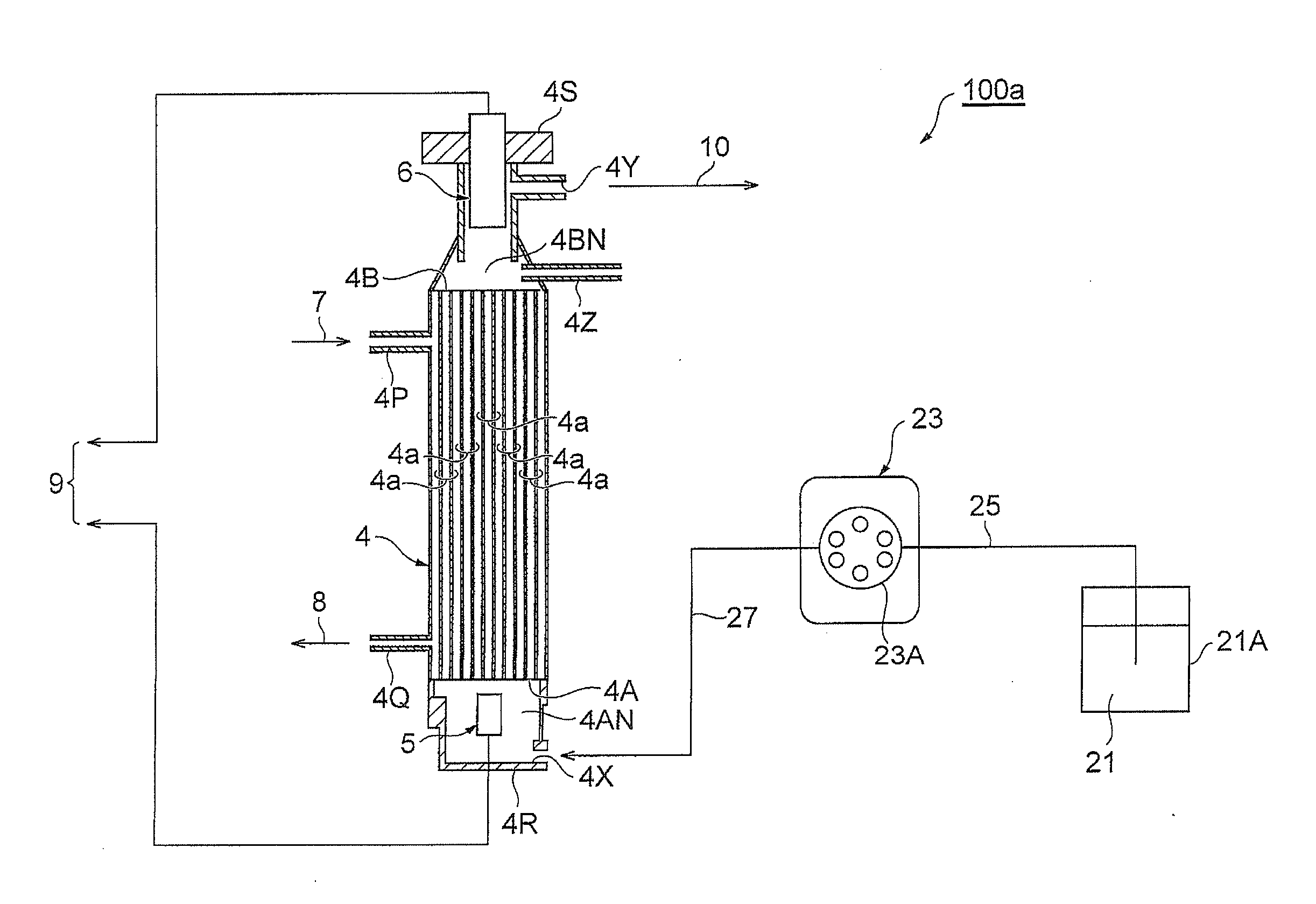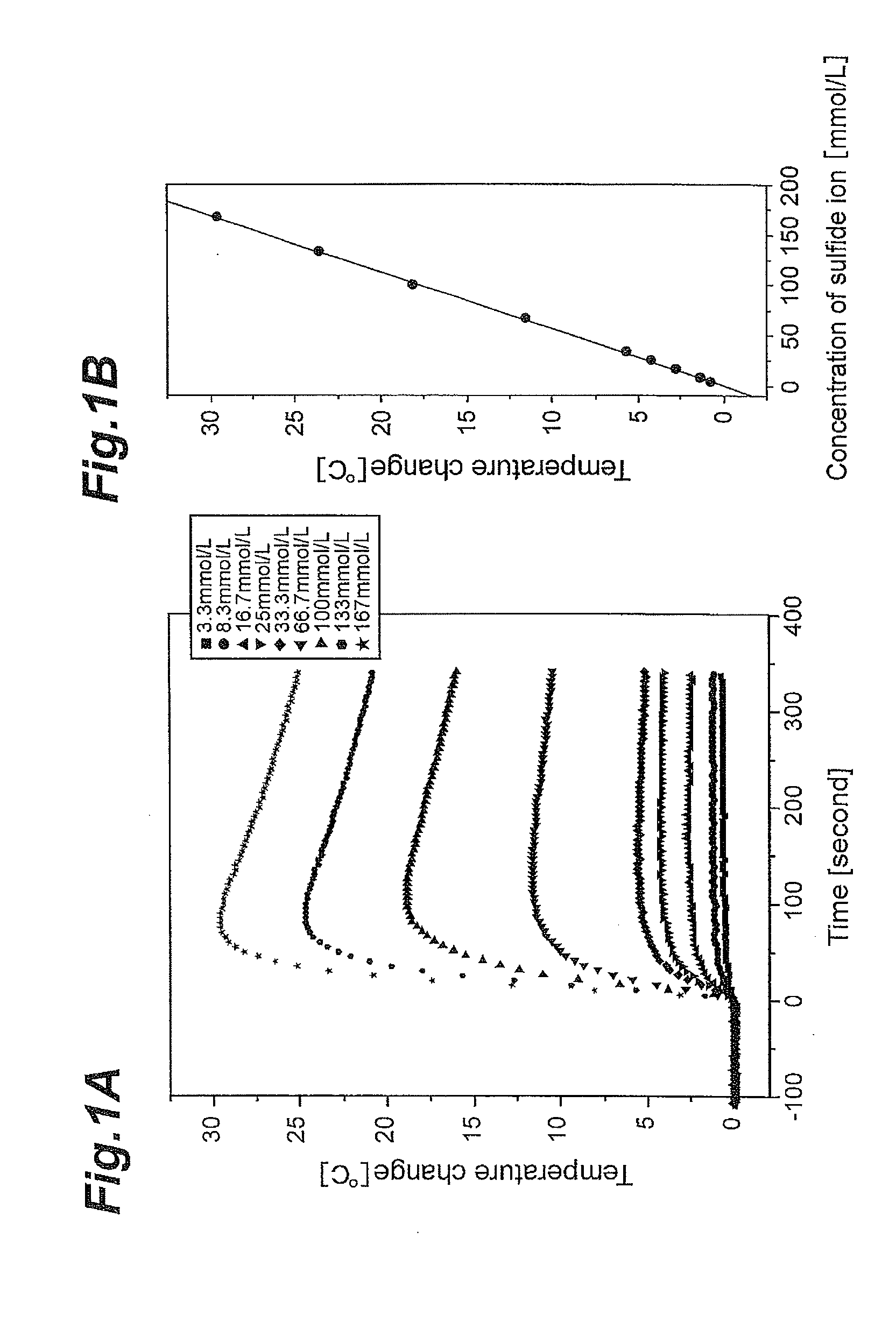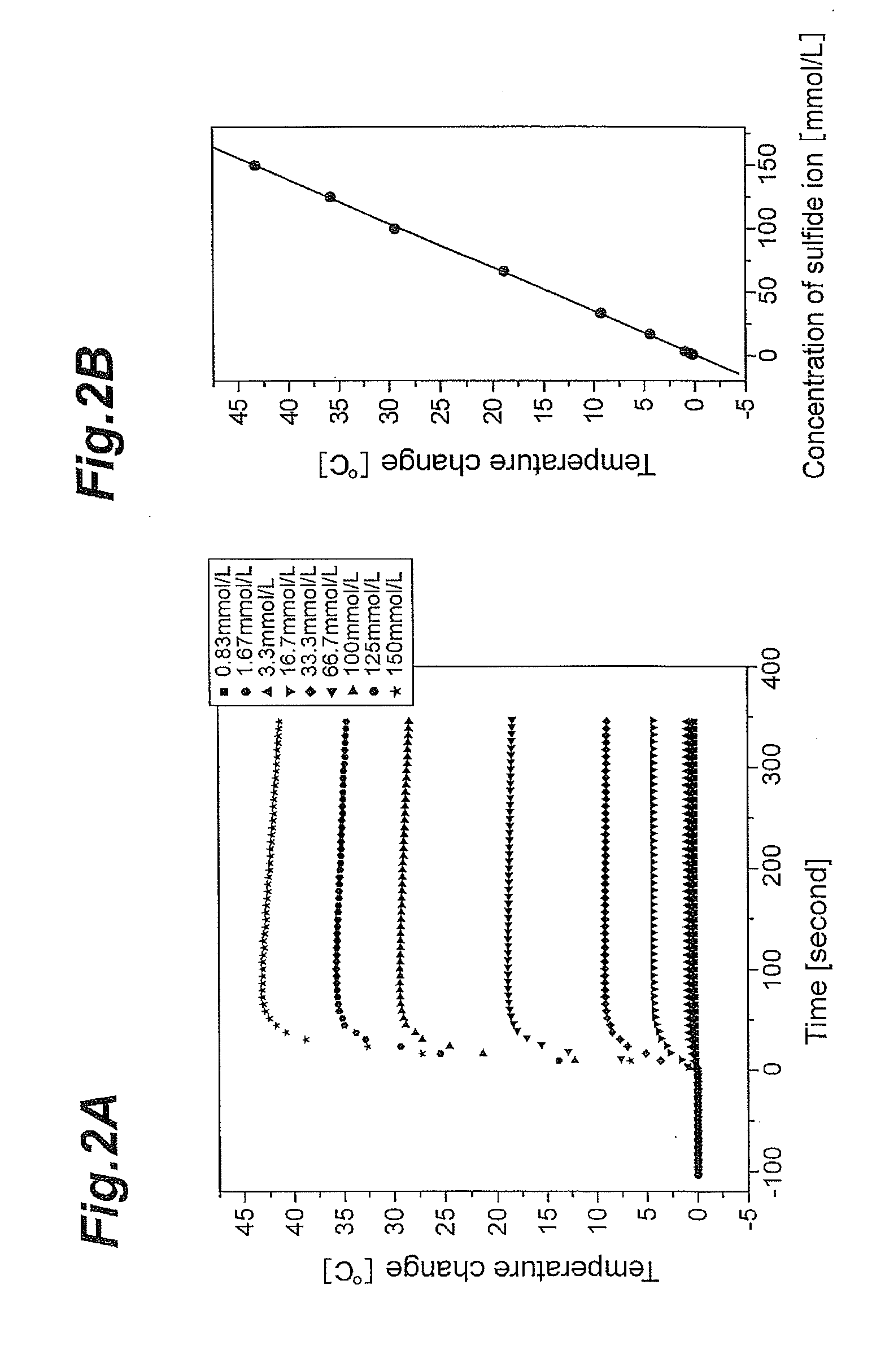Concentration measuring apparatus for hydrogen sulfide in gas flow, and method for determining sulfide ion
a technology of concentration measuring apparatus and hydrogen sulfide, which is applied in the direction of instruments, biological materials, and material analysis, can solve the problems of poisonous and highly corrosive gases, many working environments are accompanied by the risk of poisoning, and achieve the effect of simple configuration, enhanced determination reliability, and increased efficiency of exothermic reaction of liquids with oxidizers
- Summary
- Abstract
- Description
- Claims
- Application Information
AI Technical Summary
Benefits of technology
Problems solved by technology
Method used
Image
Examples
example 1
[0093]FIG. 7 is a diagram showing temperature response to series of step changes of H2S concentration in a gas flow in a low concentration region. As the hollow fiber membrane contactor 4, a polypropylene compact membrane module made by Membrana was used. Gradual change of temperature difference corresponds to change in the case where the H2S concentration in the gas flow 7 was increased or decreased by 250 ppm (0.025%). NaOH at a concentration of 0.3 mol / L was used as the absorbing liquid 1, and the flow rate of the absorbing liquid 1 was 2 mL / min. H2O2 at a concentration of 2 mol / L was used as the oxidizer 2, and the flow rate of the oxidizer 2 was 2 mL / min. FIG. 7 shows the result obtained about the temperature response of the measuring apparatus in a lower concentration range of H2S compared with the result shown in FIG. 5.
example 2
[0094]FIG. 8 is a diagram showing an example in which superiority of temperature difference measurement in the present invention is proved. A solid line D shows the result based on temperature difference measurement according to the present invention (measurement of the difference between the measured value by the second thermometer 6 and that by the first thermometer 5), and a dashed line C shows the result based on the difference between the measured value by the second thermometer 6 and an initial input temperature (the first measured value by the first thermometer 5) as Comparative Example. Use of the difference between the measured value by the second thermometer 6 and the initial input temperature in the case of Comparative Example is for giving the zero base line in Comparative Example so that the temperature difference measurement can be easily compared with the measurement only by the second thermometer 6. (At first, the measured value of the first thermometer 5=the measure...
example 3
[0097]FIGS. 9A, 9B, 9C, 9D and 9E are diagrams showing reproducibility of response of the measuring apparatus to gradual change between zero gas and various H2S concentrations in a gas flow. A polypropylene membrane module was used as the hollow fiber membrane contactor 4. Moreover, in FIG. 9A, step change of the temperature difference corresponds to change in the case where the H2S concentration in the gas flow 7 was increased or decreased step by step between 0 ppm and 25,000 ppm. NaOH at a concentration of 0.3 mol / L was used as the absorbing liquid 1, and the flow rate of the absorbing liquid 1 was 4 mL / min. H2O2 at a concentration of 2 mol / L was used as the oxidizer 2, and the flow rate of the oxidizer 2 was 4 mL / min. The flow rate of the gas flow 7 was 200 mL / min.
[0098]In FIG. 9B, gradual change of the temperature difference corresponds to change in the case where the H2S concentration in the gas flow 7 was increased or decreased step by step between 0 ppm and 1,250 ppm. NaOH a...
PUM
| Property | Measurement | Unit |
|---|---|---|
| volume | aaaaa | aaaaa |
| volume | aaaaa | aaaaa |
| thickness | aaaaa | aaaaa |
Abstract
Description
Claims
Application Information
 Login to View More
Login to View More - R&D
- Intellectual Property
- Life Sciences
- Materials
- Tech Scout
- Unparalleled Data Quality
- Higher Quality Content
- 60% Fewer Hallucinations
Browse by: Latest US Patents, China's latest patents, Technical Efficacy Thesaurus, Application Domain, Technology Topic, Popular Technical Reports.
© 2025 PatSnap. All rights reserved.Legal|Privacy policy|Modern Slavery Act Transparency Statement|Sitemap|About US| Contact US: help@patsnap.com



